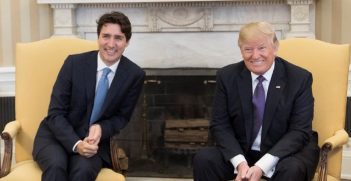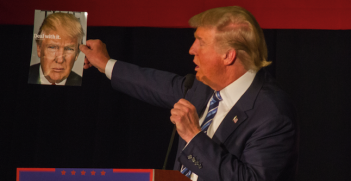Speaking Indonesian: A Strategic Choice

There are gloomy statistics about Indonesian language studies in Australia’s schools and universities. Just recently Tim Lindsey pointed out we had less kids studying Indonesian in Year 12 than we did 40 years ago, and that on recent trends it would disappear altogether from universities in 10 or 15 years. The Menzies-era initiative to study the language of our new neighbour is threatening to peter out.
An OECD study conducted in 2010, Education at a Glance, found on average 8 per cent of the compulsory curriculum for children aged 9 to 11 in OECD countries is devoted to modern foreign languages, rising to 13 per cent for children aged 12 to 14.
In NSW it has been zero and about 2 per cent, respectively.
With Australia, the OECD identified the impediments to language learning as:
- insufficient time allocated to languages in schools;
- fear of competing against native speakers;
- the perceived negative impact of language study on tertiary entrance scores; and
- a shortage of teachers.
There was also a decline in student, school, parental and community value for language learning. A NSW Board of Studies research director recently summed up the attitude: “English is the universal language of the internet and international trade so there isn’t the same imperative to learn other languages now.”
But I suggest that Indonesian should be the focus of a renewed national language strategy, with the aim of making it a universal and compulsory school subject in primary and junior secondary schools.
The case for Bahasa
For some countries, the choice makes itself because of their neighbourhood and domestic language base—French and English for the Canadians, Spanish for the United States, Maori/Polynesian for New Zealand, the language of the biggest neighbour for the Europeans.
In Australia and nearby, we have more than 100 Indigenous languages in various states of survival and we have the Melanesian arc with some 1,200 languages, the largest group having about 200,000 speakers.
Indonesia is half the neighbouring arc of islands, with 260 million people who mostly speak Bahasa; it has an economy growing to be one of the ten largest in the world; and it is a country strategically located in what has become a focus of major power contest.
We could say we should learn Indonesian for national security reasons, as in the 1950s. But opinion polls show Australians are getting over their old phobias about invasion from Indonesia, so national interest is a more appropriate way of selling a Learn Bahasa policy.
As well as the mercantile possibilities, we should be stressing the intangibles. Learning the language of our biggest neighbour says something about our nation’s place in the world and its region. Our recent defence white papers say we are no longer looking for security from out region, but security within it. This is one big way of saying so.
I recall talking with Professor Ross Garnaut some years back. He said senior Indonesians think of Australia as a very important part of the world. He was not sure that Americans and Chinese did, and thought Europeans and Indians certainly did not at this stage. He said this made the Indonesian relationship very important to us. Indonesia was never going to be isolated in Asia, and if we had a close and productive relationship with Indonesia, we were never going to be isolated in Asia either.
Fortunately for us, Indonesian is an almost ideal language for school kids to feel they are making early progress, and for them to put it into practice, either on Skype or on a family holiday overseas, which with 1.1 million Australians visiting Indonesia each year, is likely to be in Bali.
First up, it uses phonetic spelling in Roman script. Along with Tagalog and in a highly inflected way Vietnamese, it’s the only Asian language that doesn’t require you to learn a new writing system. The removal of this early hurdle is such a tremendous benefit for new learners.
For an English speaker it is easily pronounced, without tones, and its grammar is simple, at least to start with. This is one of the reasons the curriculum body ACARA advances to defend the teaching of Italian in primary schools: “its relatively simple pronunciation and closeness to English in phonology”.
And as I indicated earlier, Indonesians are not so sombong (stuck up) about their language, unlike say the French or Japanese where you have to be almost fluent before they recognise anything of what you are saying. Indonesians are receptive to novice attempts, so the language is usable from very basic levels upwards. Indonesian society is also comparatively accessible, with Indonesians happy to mingle with foreigners and invite them home.
So if we are truly going to make inroads on our mono-lingualism, introducing Indonesian at the primary school level is surely the best way to start.
For those who say an Indonesian focus would divert from other strategic languages like Chinese, Japanese, Hindi, or Arabic, there is ample research to show immersion in one foreign language tends to increase the interest and mental receptivity to try others.
And as we all know, Indonesian also has its pathways into the Sanskrit languages, Arabic and Persian as well as smatterings of Chinese, Dutch. Its own culture, high or popular, is rapidly evolving with a more educated, worldly and interconnected population, and will make Indonesia itself a subject of continuing fascination and provide plenty of bahan (material) for future echelons of students.
Nor does a study of Indonesia and its language mean an identification or endorsement of everything about it, just as the reverse is true. As David Hill at Murdoch University points out, enrolments at university were strong in the Suharto years when many academic staff were critical of the government and its ideology. If West Papua does one day change its status, its language will be Indonesian.
What I’m proposing is a big investment. Australia has some 9,400 schools, about 4,800 of them primary schools. I am told there are now about 700 teachers qualified to teach Indonesian.
It will take some years to rebuild the cadre of secondary teachers who typically have a three-year major in Indonesian, but a boost could come faster for primary schools where a year’s training is enough for a start.
There is the idea of a teacher exchange—their English teachers coming here and our Indonesian teachers going there in a kind of role reversal while they brush up on their own fluency—but academic friends point out numerous practical difficulties and differences of pedagogical style.
I guess this is true in many cases, but looking back through my notes on the last Leongatha visit I recorded one young Indonesian teacher as saying the Australian kids were much more polite and willing to listen, and that she had to shout a bit back home. So different styles of teaching may not be such an obstacle. The important thing would be to select teachers carefully. This would be a topic for Canberra to discuss with Jakarta.
What I am proposing goes far beyond the token investment made so far in engaging with Asia. This is a long-term program going beyond the life of most governments. Yet when hundreds of millions of dollars are quickly and easily found for national security programs, and hundreds of billions pledged for defence, surely such an investment in our long-term national interest and identity can’t be ruled out.
I go back to what Ross Garnaut said to me:
“If we have a close and productive relationship with Indonesia, we’re never going to be isolated in Asia.”
Hamish McDonald FAIIA is world editor with The Saturday Paper and has previously been a correspondent in Jakarta, Tokyo, Hong Kong, New Delhi and Beijing. He is a fellow of the Australian Institute of International Affairs.
This article is published under a Creative Commons Licence and may be republished with attribution.





